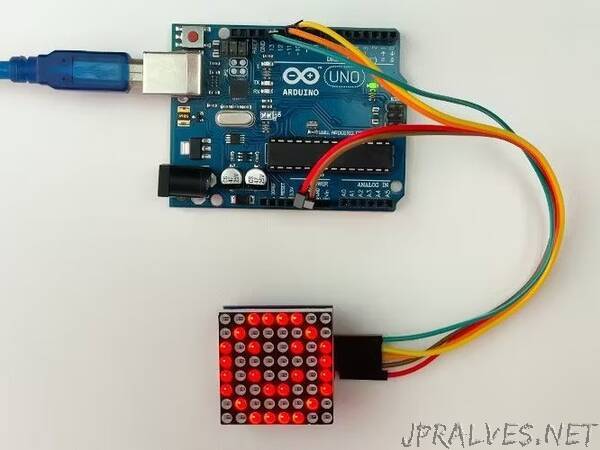
“The article provides an in-depth exploration of the MAX7219 8x8 LED Matrix Module, and how to interface it with an Arduino.
The MAX7219 8x8 LED matrix module is a compact, versatile display unit favoured by electronics hobbyists and developers working on microcontroller projects. It employs the MAX7219 LED driver IC, which simplifies the task of connecting and controlling multiple LEDs. This module can manage up to 64 LEDs in an 8x8 grid, enabling it to display characters, symbols, and animations by addressing each LED individually.
The module requires only three control signals, minimizing the number of necessary pins. Its daisy-chain capability allows for display expansion by connecting multiple modules without needing extra microcontroller pins. Operating on a simple serial interface, the MAX7219 module is compatible with most microcontrollers, including Arduino and Raspberry Pi. Its user-friendly design, low power consumption, and high visual impact make it an excellent choice for DIY projects, digital signage, and interactive displays.
MAX7219 LED Matrix Module Pinout
The MAX7219 LED matrix module has ten connections, five of which are for interfacing with the microcontroller and the other five are for daisy-chaining to the next module. Here is the PCB with the LED module removed for easy understanding followed by the pinout.
MAX7219 8x8 LED Module Specifications
- Wide Operating Voltage: 3.7 to 5.3 V
- Input Current: 320 mA
- 8 x 8 dot matrix Display
- Serial Interface Control: Allows for control using a simple serial communication protocol, minimizing the number of microcontroller pins needed.
- Cascadable Design: Multiple MAX7219 modules can be daisy-chained to create larger displays without using additional microcontroller pins.
- Individual LED Control: Each of the 64 LEDs in the 8x8 matrix can be individually controlled, enabling the display of a wide range of characters, symbols, and animations.
- Brightness Control: Supports adjustable brightness levels, which can be programmed via software to suit different lighting conditions.
- Low Power Consumption: Efficient power management makes it suitable for portable battery-operated devices.
- Compact Form Factor: Its small size makes it ideal for space-constrained applications.
- Digital Error Correction: Automatically detects and corrects any errors in the communication data, ensuring reliable performance.
- Versatility: This can be used with popular microcontrollers like Arduino, Raspberry Pi, and others, which facilitates integration into various projects.
- PCB Dimensions: 30 x 30 x 1 mm”
